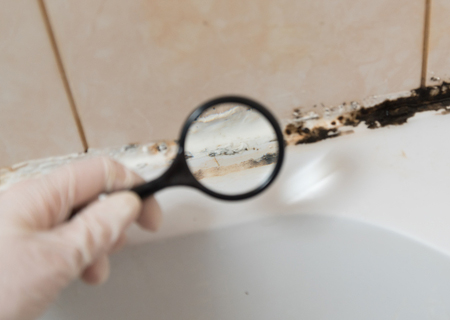Which is Better: Silicone Sealant or Acrylic Sealant?
It is sometimes hard to keep track of all the supplies you need for home improvement or home repair, especially with all the advancements in technology so we look at silicone or acrylic sealer and which is the better product.
26/09/2021
There used to be a time when silicone sealer was the only option for sealing stuff, whether it is finishing off around sanitary ware, filling gaps around window frames, or whatever else you can use silicone sealant for. And then they invented acrylic sealant and it helps to know the difference between the two and which is better for what.
First off, you can't really compare silicone sealant with acrylic sealant because both products have their own benefits and uses, and this is what we look at below.
Silicone Sealant vs. Acrylic Sealant
Before we can discuss the benefits and uses for both silicone and acrylic sealant, we need to look at the differences between these two products.
Silicone sealant is based on silicone polymers while acrylic sealant is based on acrylate polymers. Both products perform as a sealant and barrier, and both have excellent adhesion. It is said that silicone sealant far outperforms acrylic sealant in that they are more flexible, resilient and longer-lasting.
The main difference between silicone sealant and acrylic sealant is the fact that you cannot paint over silicone sealant, which makes acrylic sealant the perfect choice for filling gaps and sealing around areas that need to be painted.
Sanitary silicone sealant is formulated to prevent the growth of mould or mildew in bathrooms, kitchens and laundry rooms.
When to Use Silicone Sealant
When silicone sealant comes to mind, the first thing that pops up is that silicone sealant is the best for sealing around bathtubs, showers and basins, etc. Silicone sealant creates a waterproof barrier - when applied properly - that not only prevents moisture damage, but also contains fungicides that prevent the growth of mould in damp areas such as a bathroom or laundry.
Always use silicone sealant - and preferably sanitary silicone sealant - around sanitary ware, fittings and fixtures in the bathroom.
When to Use Acrylic Sealant
Acrylic sealant, also known as acrylic or latex caulk, is available at Builders or your local hardware stores and comes with many different brand names.
Without going into too much technical detail, acrylic sealant consists of acrylate polymers - a form transparent plastics, have excellent elasticity properties and are resistant to breakage. While they may not be as durable as silicone sealant, they have the added advantage that you can paint over them, making them suitable for gaps and barriers around windows and doors, cornice and skirtings and other areas where gap filling is required.
Acrylic sealant can be painted over with almost all types of paints, making the ideal choice for those areas that will be painted over at some time or another.
When purchasing acrylic sealant for the home, you need to purchase either an interior or exterior acrylic sealant depending on where it will be used or select a product that is specified for use both indoors and outdoors. It is almost like choosing crack filler - why buy a pack of indoor and outdoor crack filler when exterior crack filler can be used for both. The same applies to acrylic sealant - buy an exterior grade that you can use both indoors and outdoors.
Due to the fact that you can paint over acrylic sealant, it is the perfect solution for filling gaps on surfaces that will be painted.
For exterior gap filling or sealer, use an exterior-grade acrylic sealant.
Today's acrylic sealants are low VOC, water based and flexible to meet the demands for filling and sealing gaps, grouting, caulking and other contractor applications. Most acrylic sealers can be overpainted after an hour, but always refer to the manufacturer's recommended application instructions. However, in areas where there is constant or excessive movement, substitute acrylic sealant with silicone sealant.








